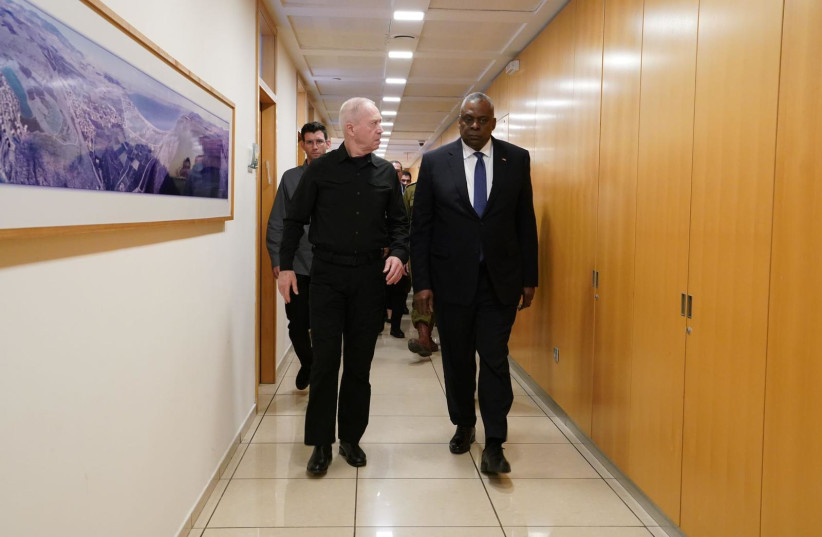Gallant: Parts of Gaza close to being able to transition to ‘day after’
Defense Minister Yoav Gallant on Monday said at a press conference with US Secretary of Defense Lloyd Austin that parts of Gaza are already close to being able to transition to a “day after” status even as other parts may remain in intensive conflict for an extended period.
Gallant’s statement was the first time that any Israeli official has publicly talked about the “day after” and a process of rebuilding starting in any part of Gaza since the start of the war.
Though he declined to say where, his statement came only hours after the IDF announced that Division 252 had “completed its mission” in the northern Beit Hanoun area of Gaza, with IDF sources telling the Jerusalem Post that many of the reservists involved would now get to go home.
This does not in any way mean that the IDF will reduce its robust attacks on Hamas in Shejaia in the North and Khan Younis in the South, but it does mean that parts of Gaza may be differentiated based on their relative level of stability.

Austin backed Israel in a stronger way than expected on the issue of Palestinian civilian casualties.
The harm to civilians
Despite the US’s concern about the rising Palestinian civilian casualties in Gaza, including US President Joe Biden having warned of Israeli “indiscriminate” fire and Austin having previously warned that harm to civilians could lead to “strategic failure,” on Monday Austin said Jerusalem faces “an incredibly complex battlespace.”
While he said that he continued to urge Israel to improve, he voiced being impressed at lessons Israel had learned from its operations in northern Gaza which it was already implementing in southern Gaza to reduce civilian casualties.
The main open disagreement between the two sides was about the plan for “the day after,” with Austin insisting on the two state solution and Gallant alluding to starting to develop new relations with groups of Gazans not connected to Hamas who could help manage the Strip post-war.
The press conference came after an earlier meeting between the two which lasted multiple hours.
Joining the meeting were a number of top officials from both sides, but notably, they included Joint Chiefs Chairman Gen. CQ Brown in his first trip to Israel as the US military’s top official (though he has visited the Jewish state in other capacities in the past.)
Brown was formally appointed in September.
Some additional officials also included: IDF Chief-of-Staff Lt-Gen. Herzi Halevi, IDF intelligence chief Maj. Gen. Aharon Huliya, Defense Ministry Director-General Eyal Zamir, IDf Operations Command Chief Maj. Gen. Oded Basiuk, COGAT Chief Maj, Gen,. Rasan Elian, and other senior officials.





Comments are closed.